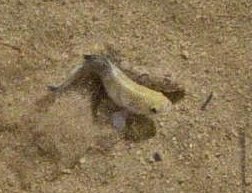Facts About Cyprinodon
Cyprinodon is a fascinating genus of small pupfishes known for their remarkable ability to thrive in diverse water conditions, ranging from freshwater to hypersaline environments. These adaptable fish are primarily found in Mexico, the Caribbean Islands, and the southern United States. Notably, some species, such as Cyprinodon variegatus, have a much broader distribution, extending as far north as Massachusetts and along the Gulf of Mexico coastline. Others, like Cyprinodon dearborni and Cyprinodon variegatus, also inhabit parts of northern South America. Unfortunately, many Cyprinodon species have restricted ranges and face significant threats, with some already extinct.
The habitats and distribution of Cyprinodon species are quite diverse. While a few species have extensive ranges, most are confined to specific regions such as certain states in Mexico, parts of the United States, Hispaniola, or the Bahamian islands. Species like Cyprinodon longidorsalis and Cyprinodon diabolis, for example, are found in extremely limited areas. These fish can inhabit a variety of environments, including springs, lakes, coastal lagoons, and rivers. They exhibit a remarkable tolerance for different salinity and temperature levels, thriving in conditions that range from hot springs to hypersaline waters.
Regrettably, most Cyprinodon species are endangered, with several already extinct. They face numerous threats, including habitat loss due to water extraction, drought, pollution, and the introduction of non-native species. These pupfish primarily feed on algae, detritus, and small invertebrates, with some species exhibiting specialized feeding habits. Their reproductive strategies also differ, with some species defending territories while others engage in group spawning behaviors.
Currently, the genus Cyprinodon comprises 49 recognized species, each uniquely adapted to their specific ecological niche. Their diversity and ability to thrive in challenging environments underscore the urgent need for conservation efforts to protect these unique and vulnerable pupfish populations.

 Belize
Belize